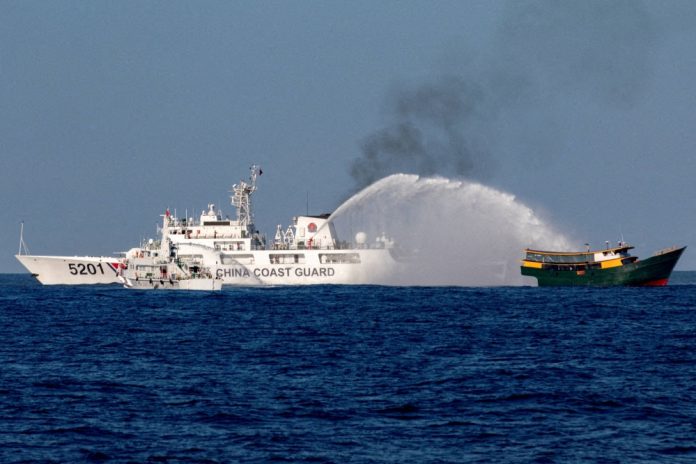A new Chinese maritime rule ordering China’s Coast Guard to detain foreigners crossing maritime demarcation came into effect, according to Asian media.
The regulation allowing China’s Coast Guard to detain foreigners suspected of trespassing into waters for up to 60 days entered into force on Saturday, sparking concern in countries such as the Philippines, which has sovereignty disputes with China.
Philippine President Ferdinand Marcos Jr, allied with the United States after taking power in 2022, reversing his predecessor’s close ties with Beijing, described the provision as “totally unacceptable.” The Philippines’ Department of Foreign Affairs (DFA) also condemned the order. It said in a statement:
A state’s domestic laws may not be applied and enforced in the territory, maritime zones or jurisdiction of other states, nor violate other sovereign states’ rights and entitlements under international law.
Experts suggest the current development will further increase tensions in the South China Sea, with Chinese and Philippine vessels frequently clashing with each other. In turn, China claims almost the entire South China Sea, a vital sea lane and an area of rich fishing grounds, but countries such as the Philippines, Vietnam, Malaysia, Brunei and Taiwan also claim competing maritime rights.
Yang Xiao, deputy director of the Institute of Maritime Strategy Studies at the China Institute of Contemporary International Relations, told state-run Chinese news channel CGTN the steps are common practice around the world, and accused Manila of fuelling tensions in the South China Sea.
Now outpost resupply missions for the Philippines are set to become challenging as China’s actions increase the likelihood of blockades and delays, according to Dindo Manhit, president of Manila-based think tank Stratbase ADR Institute.
He also stated: “China’s new regulations threaten the livelihoods of Filipino fishermen and hinder the military’s ability to conduct resupply and humanitarian missions to its outposts in the West .”
Nonetheless, last August, China released a “standard map” with a 10-point line that Beijing uses to claim almost the entire South China Sea. Beijing also lays claim to the Japanese-controlled Senkaku Islands in the East China Sea, calling them Diaoyu, and regularly sends its ships to the islands.
